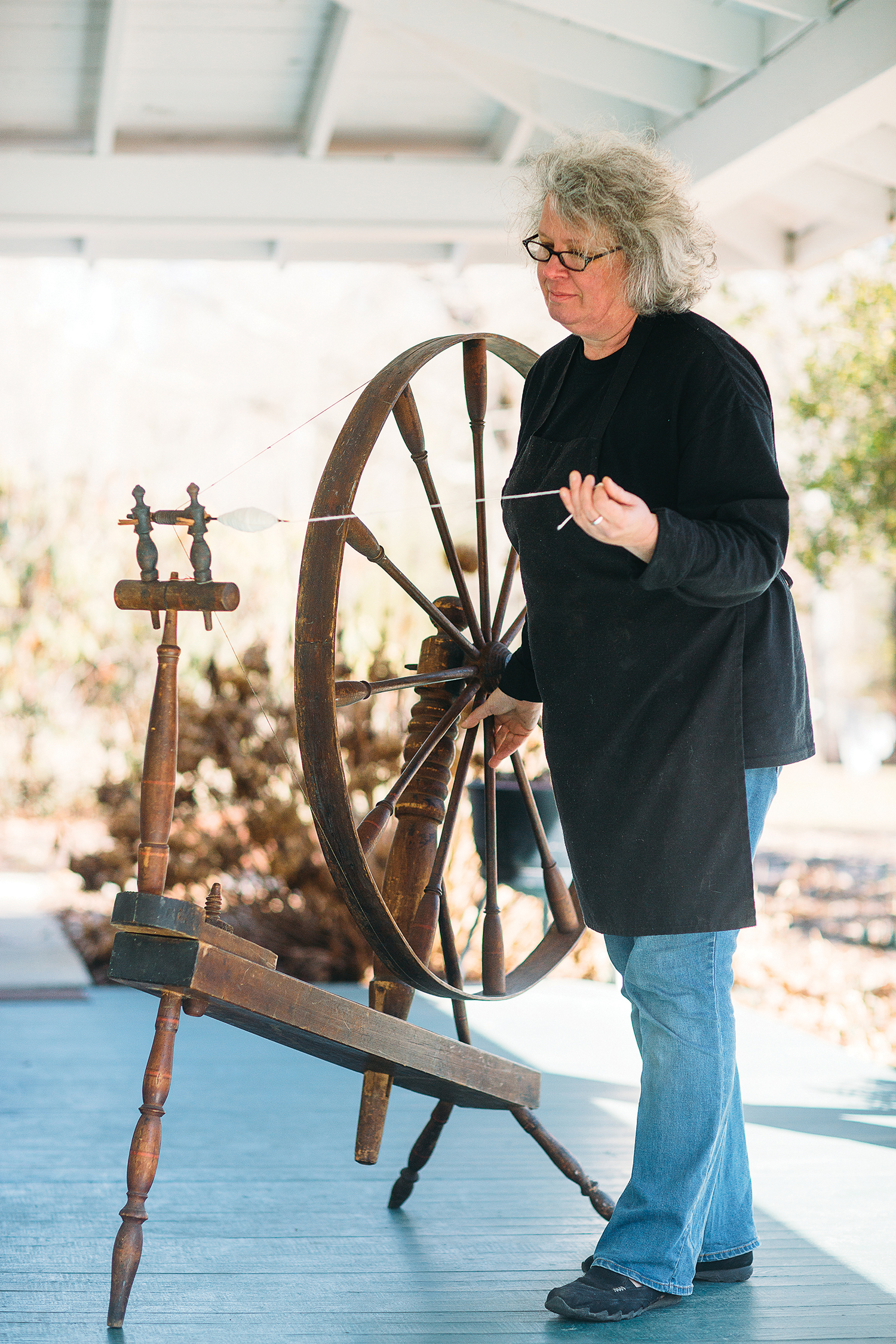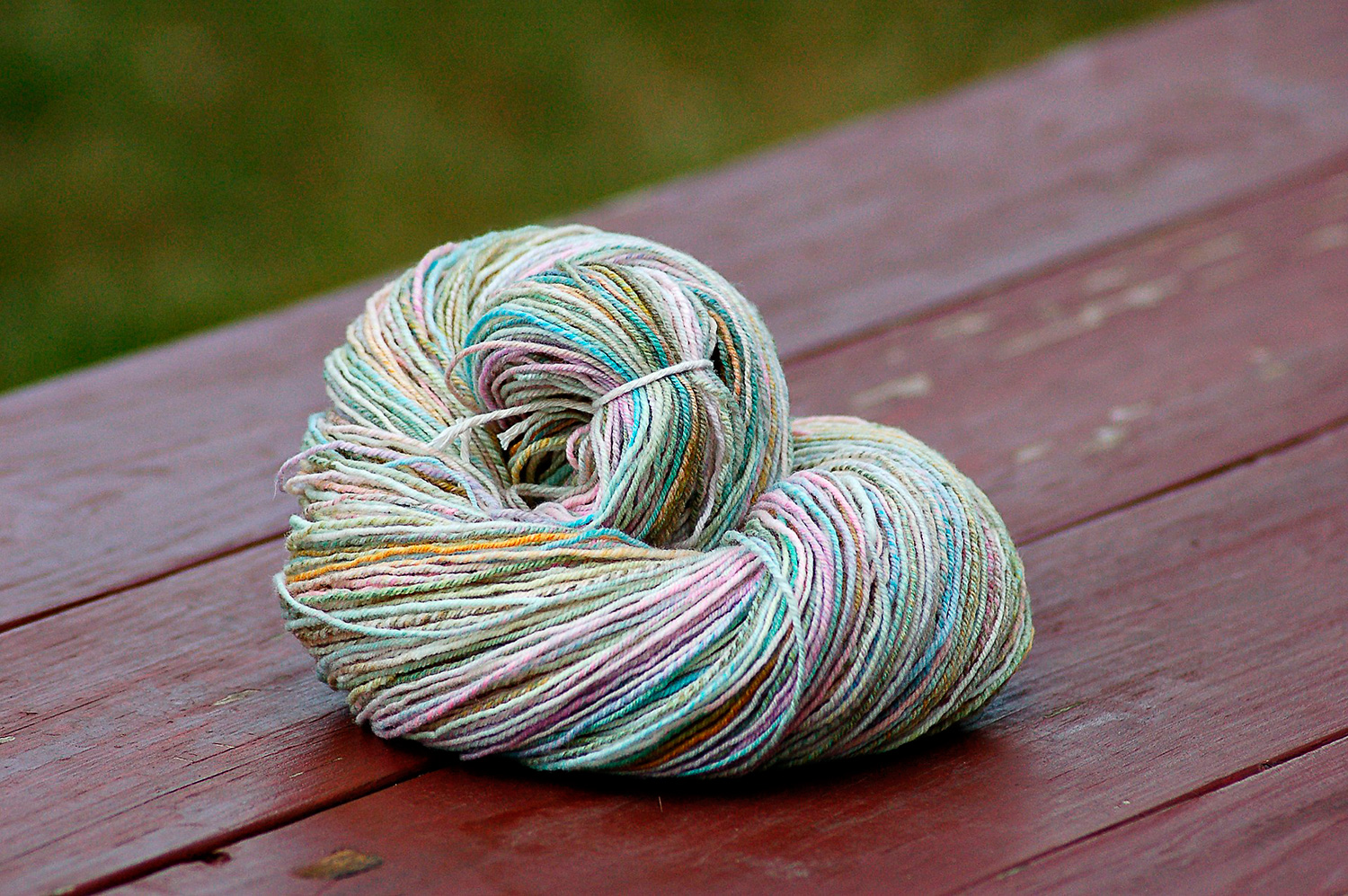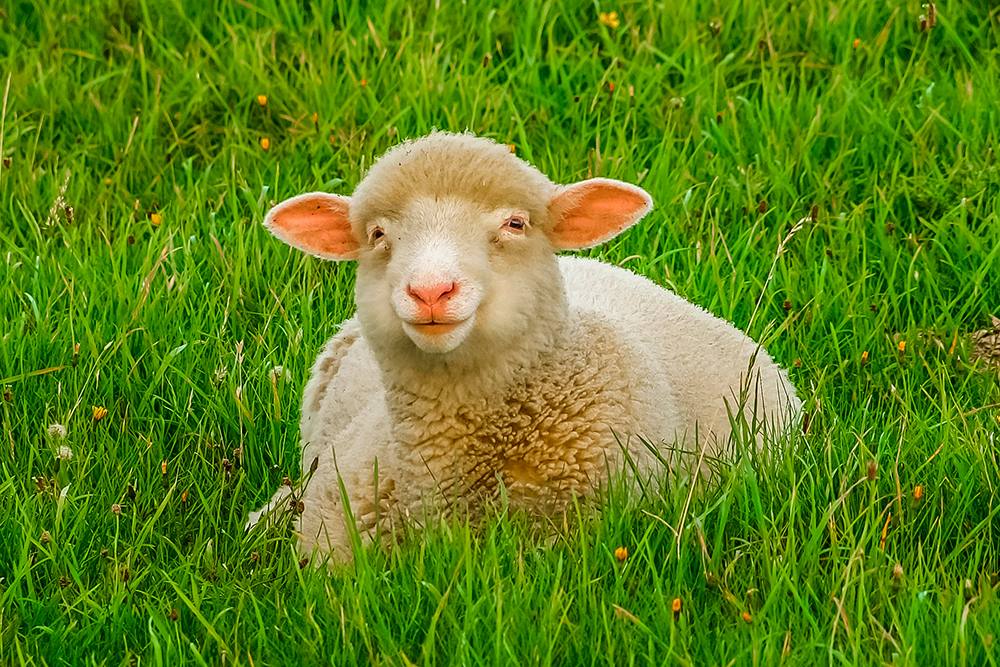
Historian Milissa Dewey showcases the “great wheel,” a device requiring so much legwork that women who used it logged miles a day just by spinning. Photo by Tim Robison.
When Congress voted yes to the Great Smoky Mountains National Park in 1926, homesteaders inhabiting its hollers were forced to decamp. But the six unmarried Walker sisters of Tennessee’s Little Greenbrier Cove? Well, they flat out refused to leave.
What the women lacked in material affluence, they made up for in Appalachian grit, says Hazel Delcourt with Heritage Weavers & Fiber Artists. After a 14-year impasse, park officials gave in, and Margaret, Polly, Martha, Nancy, Louisa, and Hettie were allowed to stay in their cabin.
Their iron-clad will didn’t stop there. It fortified every fiber of the sisters’ being — chiefly the linsey-woolsey they wore. “Because of the stubborn, isolated nature of mountain folk, the old ways lingered,” says Delcourt. That meant the Walkers still spun yarn on the great wheel, an ancient behemoth invented 400 years prior.
First used in the British Isles, the great wheel made its way over to America with the colonists, but was soon traded out for the smaller and more efficient Saxony style. Without treadles, the great wheel required that users walk back and forth, or do what Delcourt calls a “little waltz,” to put tension on the drive band. In a day’s time, women might have put in several miles, only to sit hours at the loom.
Typically, the four-foot-in-diameter spinner sprawled out on the front porch, while Saxony styles crowded the indoor living space. Though the great wheel was already anachronistic in most places by the late 1800s, it was still a custom among folks living in remote mountain coves, says historian Milissa Ellison Dewey.
She offers the example of the Reece clan out of Ashe County. Victoria, the family matriarch, bartered yarn for eggs and sent her son off to fight the Civil War in a uniform fashioned on the great wheel.
Five generations later, Victoria’s “home equipment” would be endowed to Dewey, a known regional revivalist of the old ways, with the understanding that it be used rather than sequestered in an attic. She now demonstrates on the Reeces’ great wheel, proving its everyday use to 100,000 fiber artists per year.
“A rosy, romantic haze only helps preservation go so far, and then practical people have to come along,” says Dewey. “It’s my belief that history shouldn’t be relegated to the past.”
Like the Walker sisters, the Swain County native has the mentality that if something’s not broken, there’s no need to fix it. Or, if the wheel’s still turning, there’s no need to reinvent it.
Heritage Weavers & Fiber Artists will host “Spinning on the Great Wheel” at the Interpretive Center at Historic Johnson Farm (3346 Haywood Road, Hendersonville) on Saturday, March 25 and Saturday, April 1, 10am-2pm. Delcourt and Dewey will lead the class; no previous experience is required. Registration is $50 for members and $65 for nonmembers. Email hwfanc@gmail.com for more information.



